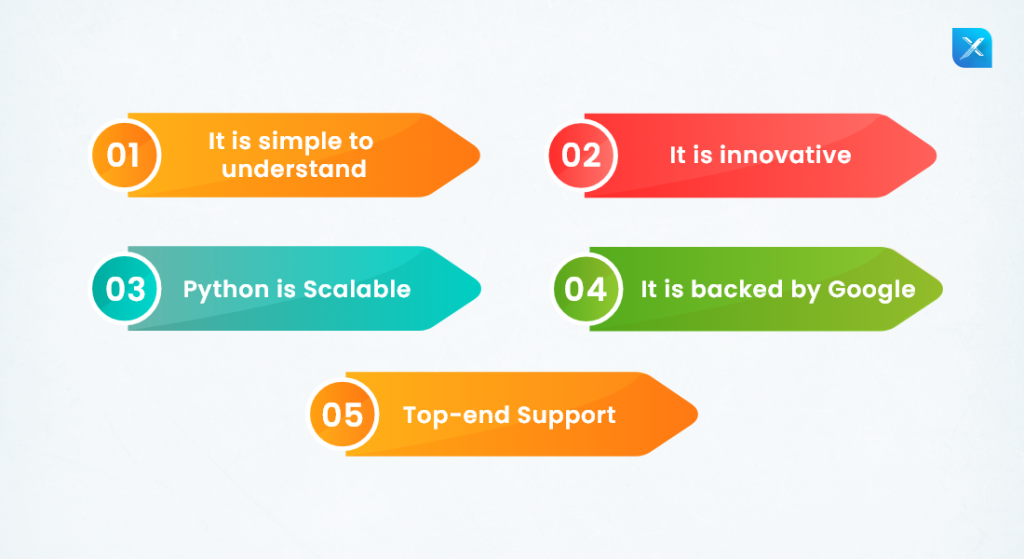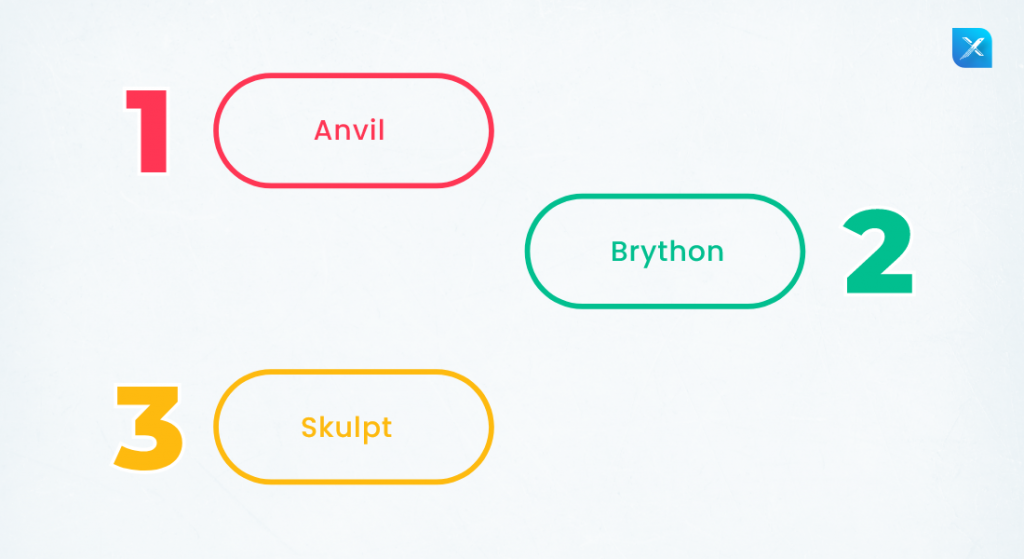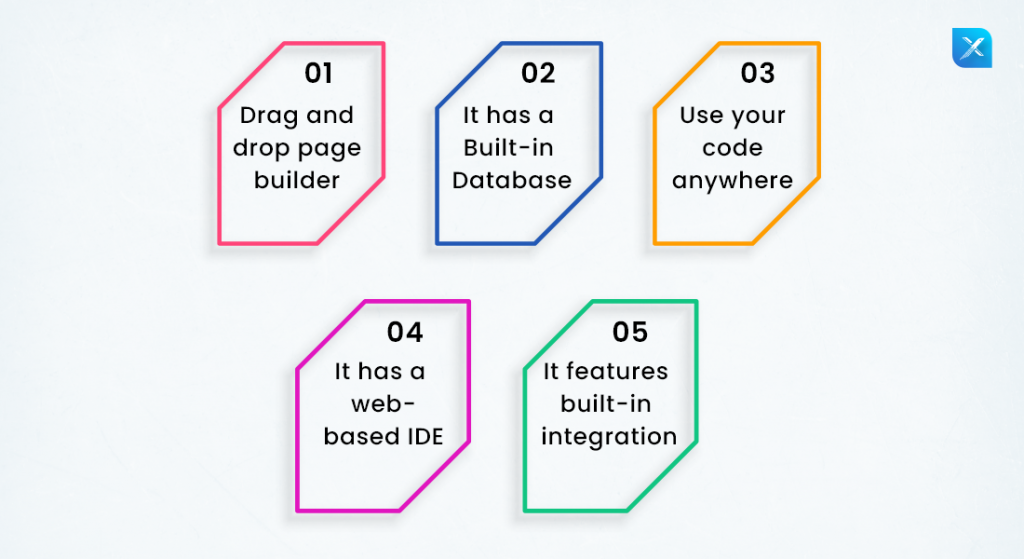Crypto Wallet App Development: Features,...
April 14, 2025

What do you notice when you open an app or a website? The user interface, right!!
Well, almost every one of us gets impressed by the UI itself. But, if it is not good, we never visit the website again and never recommend it to anyone. As per stats, 38% of the users stop engaging with a website if it is unattractive in looks.
Therefore, UI is a crucial element. If we go into more technicality, UI is a part of Front-end development. There are many aspects of Front-end development other than UI that need your attention. To ensure that all of them are spot-on, choosing a good Front-end development tool is necessary.
For a long time, Javascript has been widely used for Front-end development. The reason is greater control, detection of user browser, platform independence, and many more! But, no more!
It seems like the titan of Front-end development has found its competition, Python! Python is an interpreted, general-purpose language that has some remarkable features to build stunning web pages. It has not completely replaced Javascript yet but has the potential to become one of the best languages for Front-end development. How? Let’s read ahead and find out!
If you are not aware of the capabilities of Python, we will help you know what it is and how it can assist you.

For those of you who are comfortable with reading and writing English, Python is a blessing. Unlike other languages like Java, C, C++, Python has a way simpler code. Null, &&, ! are some of the aspects that other languages have. They can sometimes confuse the developers, but Python does not.
Unlike null and other symbols, python uses words like not, none, and, etc.
There are many Front-end development tools. There is no issue with them, but they are limited to some extent. On the other hand, Python is not! The programming language is backed by some of the best libraries in the world. These libraries enable developers to think differently and produce innovative products. Tech giants like Google, Facebook, Netflix are using Python for their apps and web platforms.
Python is a language that supports various types of paradigms such as:
Therefore, tomorrow, if you plan on making a finance-related app or any gaming app, you can leverage Python.
Google is one of the renowned technology giants of this era. Therefore, it is obvious that if Google uses Python for its operations, the language is legit and utilitarian. If you aim to excel in Front-end web development, you need to hire python developers. As a bonus, Google has created a dedicated portal for Python developers to learn better.
No matter which programming language it is, they all have online support. Python has been here for over 30 years. So, it does not only support online communities but also has various online resources like tutorial videos, documentation, etc.
Developers from around the world can access all these resources at any time to get help free of cost. Online communities like Stack Overflow can also be used to post questions and get answers from countless developers from around the world.
So far, we have discovered the significance of Python on an overall basis. Now, let’s see how Python can help in Front-end development.
There are countless reasons for which you need to hire python developers for your upcoming projects. The first one is the frameworks and page builders that are specifically built for Python. To make Python easy for Front-end development, these dedicated tools can be of great help.

Anvil holds the higher ground if we talk about Front-end as well as backend development using Python. So, what is Anvil?
Anvil is a web app drag and drop builder which is entirely free to use by developers. The tool provides numerous awesome features that not only help you build a web app, but you can do it way faster.
Let’s discuss some of the features of Anvil!

This is one of the best features of Anvil that almost every developer likes. You can access any required page element from the side panel and place it anywhere you want on the screen. All thanks to the drag and drop page builder.
There is no need for you to be fluent in HTML, Javascript, or CSS. Everything related to this is automated. The welcome page and any other page of the Anvil page builder is known as a Form. Each form or page can be viewed in two modes by the developer, Design and Code.
The design model can be used to alter the page elements and characteristics with the drag and drop page builder. On the other hand, if you would like to make custom changes to the code, you can view it in the code view.
It is obvious that if you are building an app, you will also need a database to store its essential data. Setting up a database can be a task of extreme hassle, and the makers of Anvil knew this. Hence, they integrated a full database system built on top of PostgreSQL.
The database in Anvil is similar to other databases that have rows and columns in it. A developer can easily add rows, columns, and data to the database. Other than that, the database columns can have data of various types. However, a developer needs to specify this in the beginning. The data types supported by the database are:
Another great aspect of the database in Anvil is data sharing. If required, the developers can share data tables between various apps.
The code of Anvil is automatically synced to the cloud. This aspect might raise many questions in the minds of the developers. So, let’s put your mind at ease. The code might be synced and run on the web, but if you need to, you can run it on your PC too.
If you have a development software like Jupyter Notebook for python, you can run the code on that too. You just have to call it from the web.
If it is your local database where you want to run the code, you can write a query script to call it from the web.
You need to keep in mind many aspects to calling the code, such as server functions, arguments, etc.
If you are using Anvil, there is no need for you to install any other software on your machine. Like Google Docs and other web-based apps, Anvil is also a browser-based tool.
Anvil has everything built-in to help you build the best python app. Here are some of the prime inclusions of Anvil:
Ok, let’s discuss the utility part a bit further! Anvil provides self-hosting options and houses various integrations.
If we talk about the hosting part, you can use Anvil to host a website in a single click, publicly or privately. Other than that, you can host it on your hardware and can embed your app on another web page.
These are some of the great features of Anvil that make it ideal for a python development company. If you are planning to hire Frontend developers for Python, check if they knowAnvil as it is one of the finest. You can learn more about Anvil!
Although Anvil is enough for your development requirements, if needed, you can check out some other frameworks for development, such as Brython and Skulpt.
There are many aspects of Brython that are way more advanced than Anvil. However, it is better than Skulpt in many ways. Brython is a python implementation in the browser. The major motive of Brython is to replace Javascript as a scripting language and make Front-end app development easy for you.
Though Anvil is way ahead of Brython, it served as a stepping stone for its development. Brython transpilers python into Javascript. This infers that through an extended API, you have direct access to DOM, which opens a window of opportunities for you.
Some key benefits of Brython are:
Skulpt is another in-browser implementation of Python which is still under development. It is still at version 0.10.
So, these are some of the reasons for which Python is ideal for Front-end development. Although it is primarily used for backend only, some tools and frameworks make it best for Front-end development too.
Various tech giants in the world use Python for web development, such as:
And many more!
If you plan to take up a new project, go for python. It is good for back-end development and is also a boon for Front-end development. Moreover, the python application development cost will also be low as it is easy to use and open-source. If we talk about hiring python developers, you can refer to the comprehensive guide to hiring python developers in 2022.